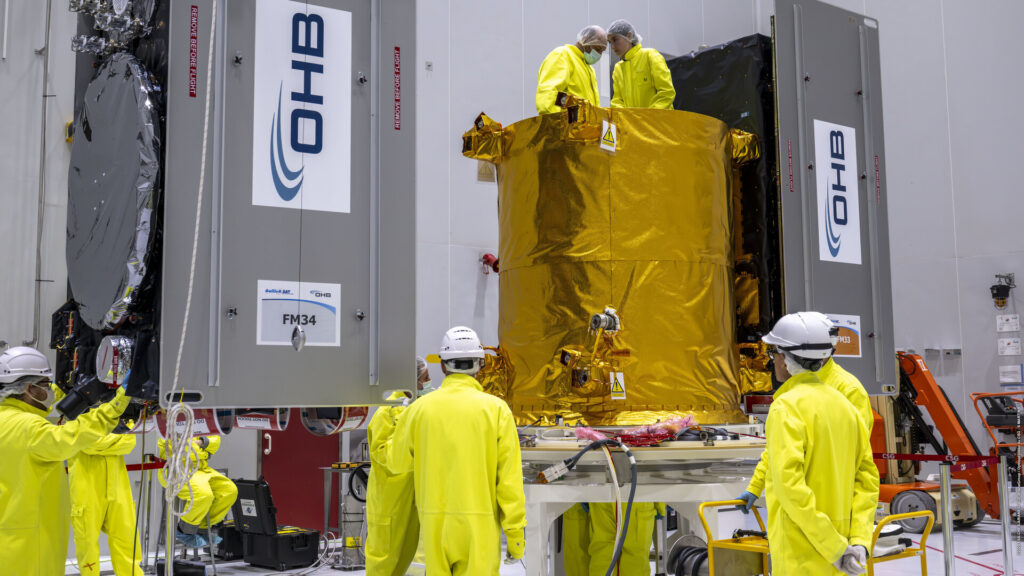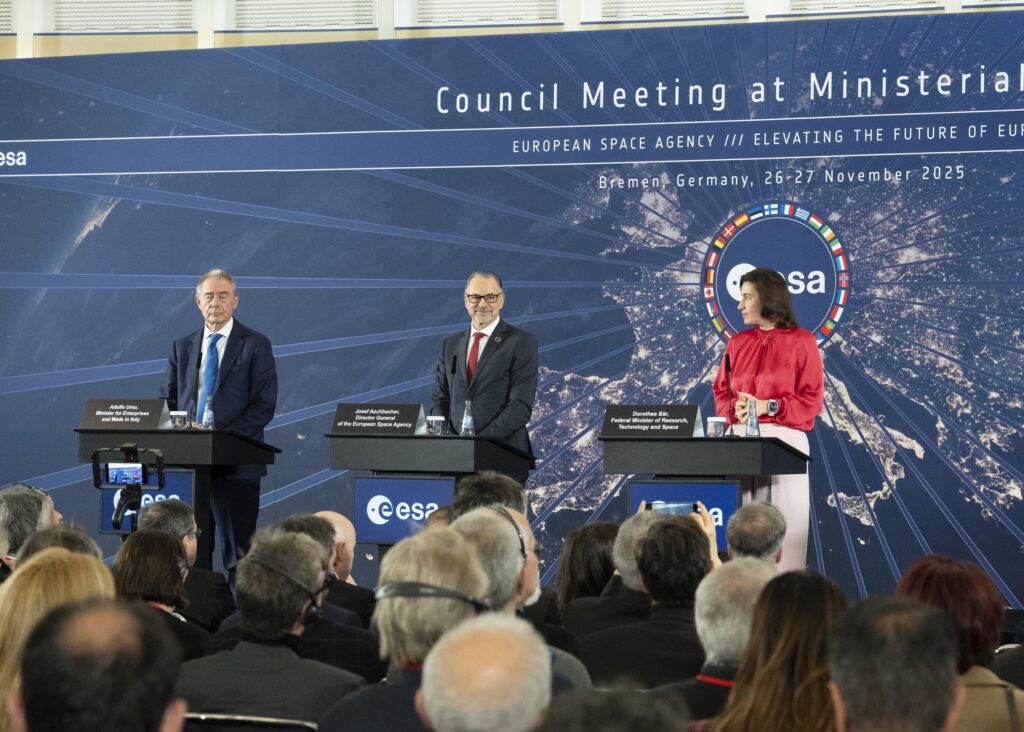Now Reading: Plato’s eyes meet brain
-
01
Plato’s eyes meet brain
Plato’s eyes meet brain


On 11 June, engineers at OHB’s facilities in Germany joined together the two main parts of ESA’s Plato mission.
They used a special crane to lift Plato’s payload module, housing its 26 ultra-sensitive cameras, into the air and carefully line it up over the service module. The supporting service module contains everything else that the spacecraft needs to function, including subsystems for power, propulsion and communication with Earth.
With millimetre-level precision, the engineers gently lowered the payload module into place. Once perfectly positioned, the team tested the electrical connections.
Finally, they securely closed a panel that connects the payload module to the service module both physically and electronically (seen ‘hanging’ horizontally above the service module in this image). This panel, which opens and closes with hinges, also contains the electronics to process data from the cameras.
Now in one piece, Plato is one step closer to beginning its hunt for Earth-like planets.
In the coming weeks, the spacecraft will undergo tests to ensure its cameras and data processing systems still work perfectly.
Then it will be driven from OHB’s cleanrooms to ESA’s technical heart (ESTEC) in the Netherlands. At ESTEC, engineers will complete the spacecraft by fitting it with a combined sunshield and solar panel module.
Following a series of essential tests to confirm that Plato is fit for launch and ready to work in space, it will be shipped to Europe’s launch site in French Guiana.
The mission is scheduled to launch on an Ariane 6 in December 2026.
Access the related broadcast quality video footage.
ESA’s Plato (PLAnetary Transits and Oscillations of stars) will use 26 cameras to study terrestrial exoplanets in orbits up to the habitable zone of Sun-like stars.
Plato’s scientific instrumentation, consisting of the cameras and electronic units, is provided through a collaboration between ESA and the Plato Mission Consortium. This Consortium is composed of various European research centres, institutes and industries, led by the German Aerospace Center (DLR). The spacecraft is being built and assembled by the industrial Plato Core Team led by OHB together with Thales Alenia Space and Beyond Gravity.
Stay Informed With the Latest & Most Important News
Previous Post
Next Post
-
 012024 in Review: Highlights from NASA in Silicon Valley
012024 in Review: Highlights from NASA in Silicon Valley -
 02Panasonic Leica Summilux DG 15mm f/1.7 ASPH review
02Panasonic Leica Summilux DG 15mm f/1.7 ASPH review -
 03How New NASA, India Earth Satellite NISAR Will See Earth
03How New NASA, India Earth Satellite NISAR Will See Earth -
 04From Polymerization-Enabled Folding and Assembly to Chemical Evolution: Key Processes for Emergence of Functional Polymers in the Origin of Life
04From Polymerization-Enabled Folding and Assembly to Chemical Evolution: Key Processes for Emergence of Functional Polymers in the Origin of Life -
 05And Thus Begins A New Year For Life On Earth
05And Thus Begins A New Year For Life On Earth -
 06Astronomy Activation Ambassadors: A New Era
06Astronomy Activation Ambassadors: A New Era -
07SpaceX launch surge helps set new global launch record in 2024




















